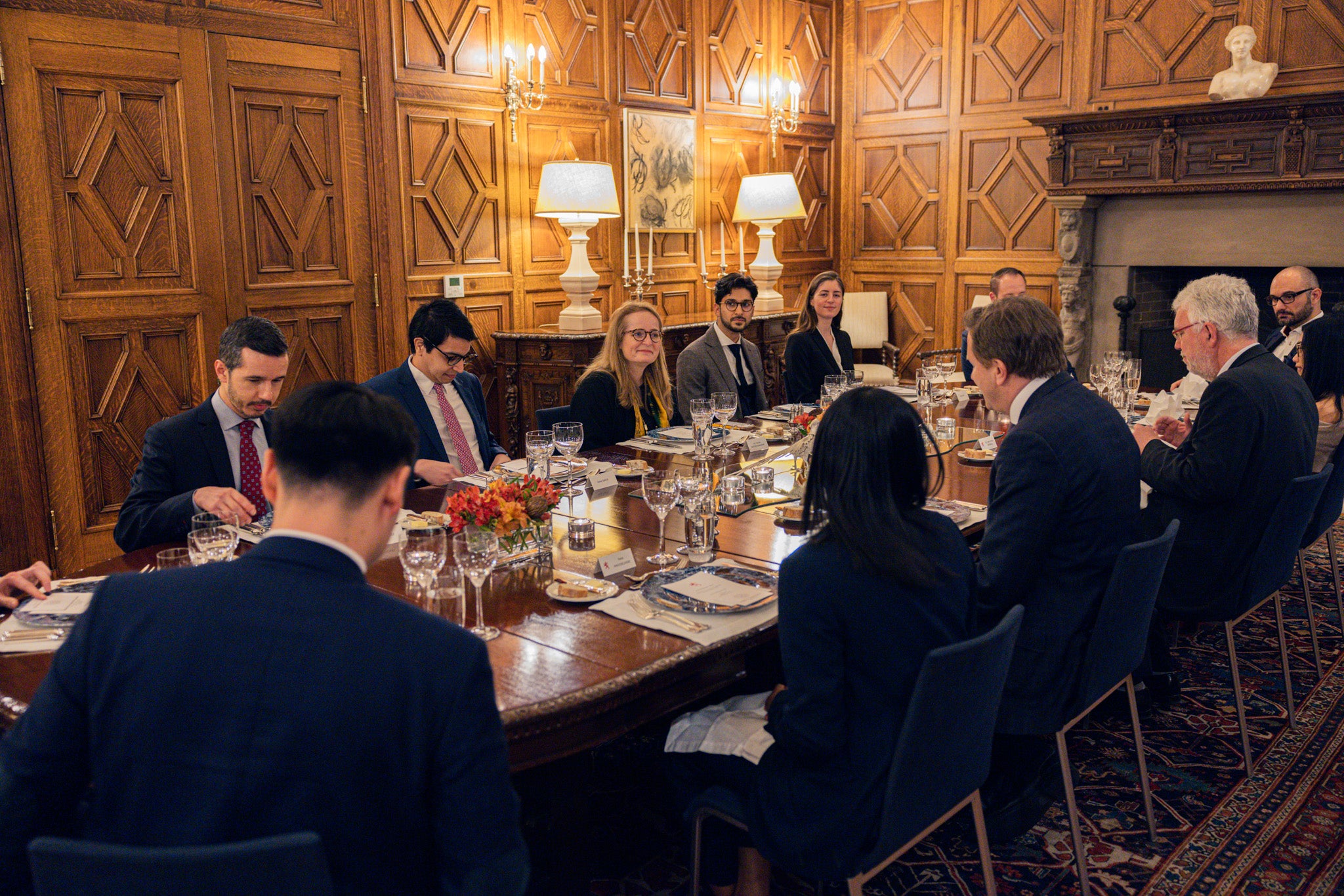A recipe for diplomatic success
Graduate students from Georgetown University’s McCourt School of Public Policy and School of Foreign Service learn the secrets of dinner table diplomacy in a new, highly experiential course.
Ideruugan Galbaatar (MPP’23) hadn’t thought much about the role food plays in international diplomacy. But after 10 dinners with some of the world’s leading diplomats, he’s discovered a new recipe for diplomatic success.
Galbaatar, who is originally from Mongolia and worked at the U.S. Embassy in Ulaanbaatar, was among the first students to be enrolled in an innovative new course called The Art of Diplomacy.
A collaboration between Georgetown University’s McCourt School of Public Policy and School of Foreign Service, The Art of Diplomacy offered 10 graduate students the opportunity to practice gastro-diplomacy with ambassadors from around the world. Most of the dinners were at the ambassadors’ private residences, offering a rare window into the world of “off the record” diplomacy over dinner.
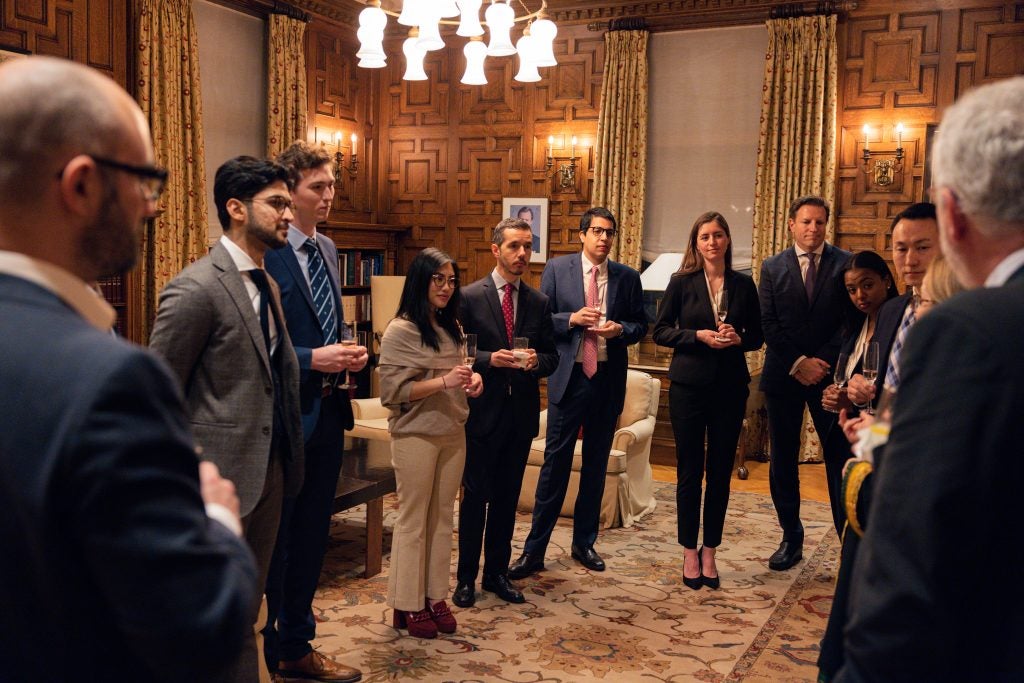
Co-taught by Ambassador Jean-Arthur Regibeau (Belgium) and Adjunct Professor Mark Vlasic , The Art of Diplomacy featured dinners with a cross-section of ambassadors, including representatives from Turkey, Sweden, Portugal, Luxembourg, Norway, Mexico and Saudi Arabia. Dinners also featured special guest speakers such as Ambassador Rufus Gifford, President Biden’s Chief of Protocol for the United States, who discussed state visits.
To kick off the semester, students read three books: America in the World (Robert Zoellick), Diplomacy (Henry Kissinger) and Dinner with Churchill (Cita Stelzer). Then, to help prepare, they dined with Ambassador Regibeau. They learned what the protocol would be and what would be expected of them — as well as how to manage high-stakes dinner diplomacy.
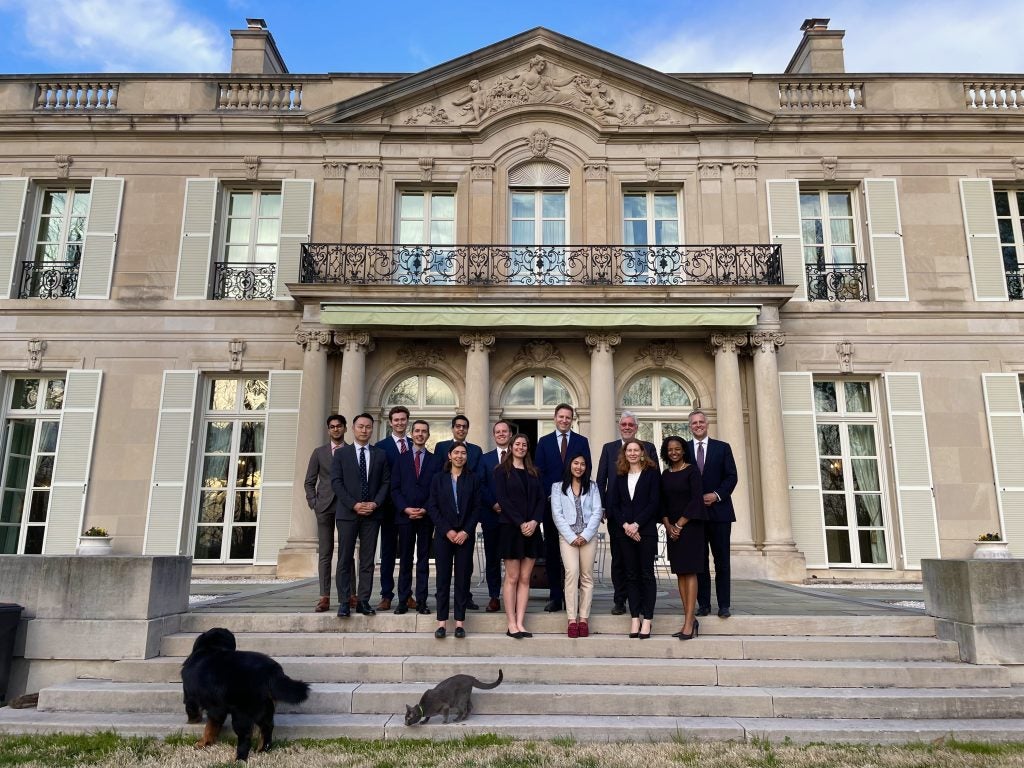
Before each dinner, the students researched the specific country and their international dealings and prepared a set of questions for the ambassador. Vlasic instructed students to be ready with two policy questions and two “how” questions.
“My hope was to give students the opportunity to learn not just about policy issues, but also to learn how an ambassador does things,” Vlasic said. “How do they leverage a dinner table to persuade senior officials from the White House, the State Department and Congress? How do they engage everyone at the table, both at dinner and after the formal setting?”
Vlasic credits the Dean’s Office for choosing the right mix of students. “There was a massive number of applications for every one course spot,” he said. He and Ambassador Regibeau wanted to make sure that the course reflected the global student body at McCourt School, because “these were global conversations.”
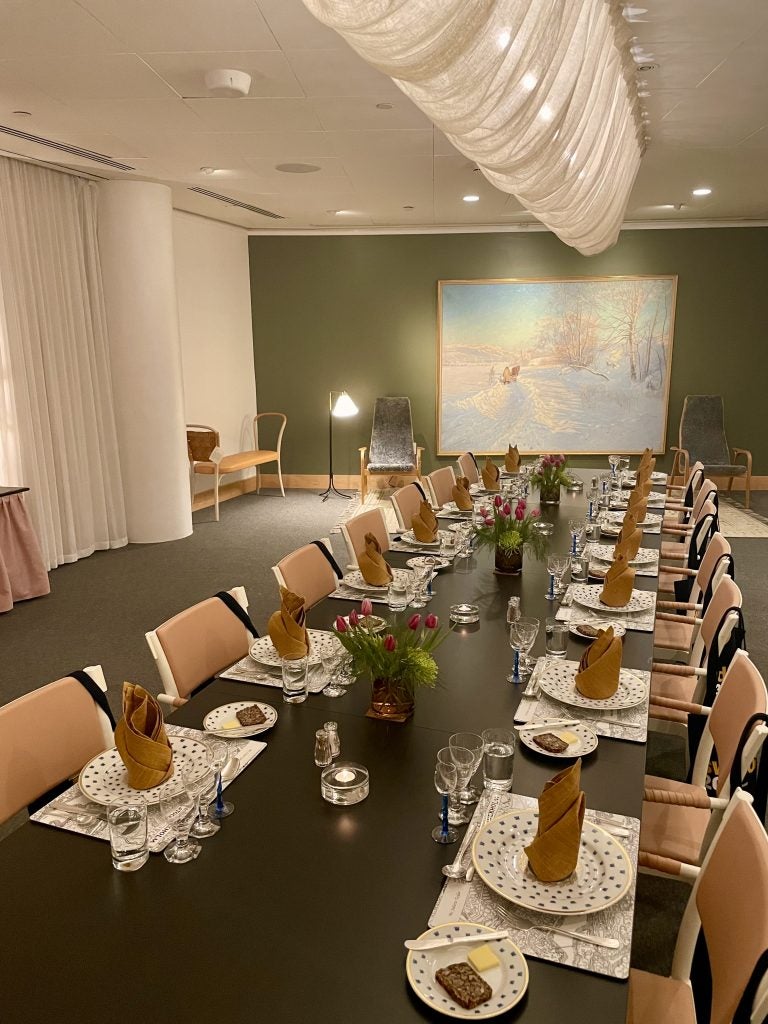
The dinners were formal in that they were multi-course, with elegant table settings and place cards, and everyone in business attire, hosted in some of the most beautiful diplomatic mansions in Washington. But they also felt intimate. “The opportunity to dine at an ambassador’s residence blended formality and informality and gave the students a chance to see how negotiations happen over a dinner table,” Vlasic said. Vlasic knows firsthand how key the dinner table can be. He leads an international law practice and recently negotiated behind the scenes to secure the release of four political prisoners held hostage by a dictator — negotiations which involved dining with various ambassadors and national security officials at “off the record” dinners in multiple cities. In fact, that was part of the genesis for the class.
Students were interested in the intersection of diplomacy and myriad topics, ranging from sports and AI to the war in Ukraine. “It was essentially 10 different interests, all linked to diplomacy, and every dinner was a crash course on the specific country and a discussion at the highest level,” Galbaatar said. The food itself was often a conduit for discussion. “When we dined with the Swedish ambassador, the chef came out and introduced the food and talked about how it was Turkish in origin, but adapted from Russia, and why it was the best food to serve that night,” Galbaatar said.
Students also got to learn how different parts of the evening could help with various aspects of diplomacy. Before-dinner cocktails were a chance for informal conversation. And once everyone sat down at the table, they needed to be involved and engaged. Ambassador Regibeau facilitated each discussion. “He is masterful at pulling people in,” Vlasic said.
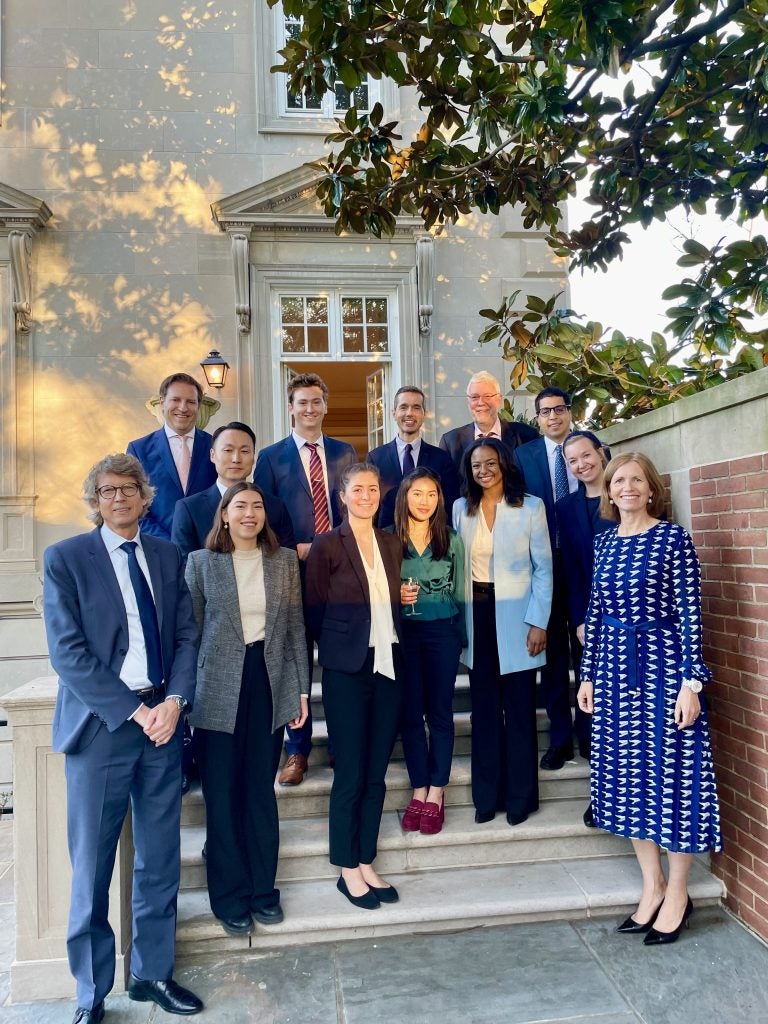
Students taking The Art of Diplomacy also had to write a final paper, analyzing what they learned and applying it to their topic of interest. Galbaatar, who currently works at the World Bank, wrote his paper on diplomacy and the Ukraine War.
“I learned more nuance, more background and more about the economies and relationships among the different countries,” he said. “I have a 360-degree view that I didn’t have before.”
“Because of this class, I have a better understanding of how global politics and diplomacy works,” he added. “This will help me in my job now and in my career in the future.”
Vlasic expects the class to be offered again — and that interest will once again be strong.
“Students who take this course will likely go into some level of diplomacy, work with the military or U.S. State Department, or take these lessons back to their own countries,” he said.
